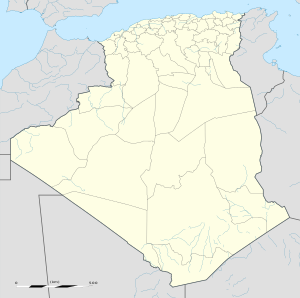Draft:Siege of cirta (46 B.C)
| Submission declined on 15 September 2024 by TechnoSquirrel69 (talk). This submission is not adequately supported by reliable sources. Reliable sources are required so that information can be verified. If you need help with referencing, please see Referencing for beginners and Citing sources. This draft's references do not show that the subject qualifies for a Wikipedia article. In summary, the draft needs multiple published sources that are:
Where to get help
How to improve a draft
You can also browse Wikipedia:Featured articles and Wikipedia:Good articles to find examples of Wikipedia's best writing on topics similar to your proposed article. Improving your odds of a speedy review To improve your odds of a faster review, tag your draft with relevant WikiProject tags using the button below. This will let reviewers know a new draft has been submitted in their area of interest. For instance, if you wrote about a female astronomer, you would want to add the Biography, Astronomy, and Women scientists tags. Editor resources
|  |
 Comment: It would help if the content in this draft was supported by inline citations. Also, is this topic duplicated by the existing Siege of Cirta article? —TechnoSquirrel69 (sigh) 01:49, 15 September 2024 (UTC)
Comment: It would help if the content in this draft was supported by inline citations. Also, is this topic duplicated by the existing Siege of Cirta article? —TechnoSquirrel69 (sigh) 01:49, 15 September 2024 (UTC)
| Siege of Cirta | |||||||
|---|---|---|---|---|---|---|---|
| Part of the Caesar's Civil War | |||||||
| |||||||
| Belligerents | |||||||
|
|
| ||||||
| Commanders and leaders | |||||||
|
|
| ||||||
| Strength | |||||||
| Unknown | Unknown | ||||||
| Casualties and losses | |||||||
| Unknown | Unknown | ||||||
Location of the siege of Cirta | |||||||
Background
[edit]During Julius Caesar's African campaign (46 BCE), tensions arose between Rome and various North African kingdoms. Mauretania, a Berber kingdom located in North Africa, was divided into two regions: Mauretania Tingitana in the west and Mauretania Caesariensis in the east. At this time, the eastern Mauretania region was ruled by Bocchus II, the second monarch to hold that title.
The Alliance with P. Sittius
[edit]Bocchus II formed an alliance with a Roman adventurer named Publius Sittius. Sittius, who was operating in North Africa, had a group of mercenaries under his command and supported various political and military ventures in the region.
The relationship between Bocchus II and Sittius was politically motivated, as both sought to expand their influence in the region. Numidia, located southeast of Mauretania, was a neighboring kingdom that had long been a focus of Roman and local power struggles.
The Invasion of Numidia
[edit]In 46 BCE, Bocchus II, with the military assistance of P. Sittius, invaded Numidia, which was under the control of King Juba I, a staunch opponent of Caesar. The combined forces of Bocchus II and Sittius managed to seize the city of Cirta (modern-day Constantine, Algeria), a significant Numidian city. This event played a key role in the eventual downfall of Juba I and the annexation of Numidia into the Roman Republic following Caesar's victory.
Aftermath
[edit]The invasion of Numidia marked a pivotal point in the Roman conquest of North Africa. Following the defeat of Juba I and the capture of Cirta, Caesar rewarded Bocchus II for his support by recognizing him as an ally of Rome. The defeat of Numidia also further consolidated Roman influence in North Africa, and eventually, the entire Numidian kingdom was absorbed into the Roman Empire as the province of Africa.
Publius Sittius, for his part, was also rewarded for his efforts, and his mercenary army was granted land in the region. The city of Cirta became an important Roman center in Afica.
Geographical Notes
[edit]The Muluccha River, which is mentioned as a possible boundary during this period, is believed to correspond to the modern-day Moulouya River in northern Morocco, marking a key geographical reference point for ancient Mauretania.
References
[edit]- ^ Sallust, The Jugurthine War, https://www.google.co.ma/books/edition/The_Jugurthine_War/3mYGVnwLSdUC?hl=en&gbpv=1&printsec=frontcover

